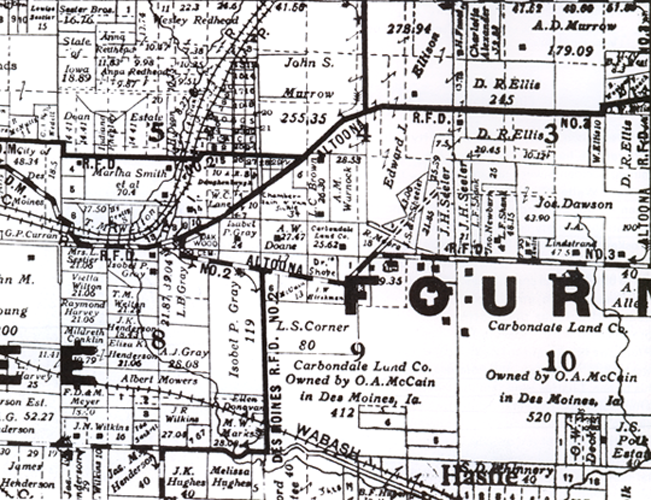Quick End to Mine's Life
The life of Christy Mine ended suddenly with the great flood of 1903. Alta Brown Alexander, a Youngstown resident, recalled that the mine suddenly flooded one night, trapping and drowning the mules kept constantly underground. (This may have been in May when Des Moines was also plagued by flood. On May 28, 1903, the Des Moines River crested at 23 feet, 5 inches above the flood stage, creating a vast lake dotted with houses in the southeast part of town and making the streets around the Capitol look like canals. (Four Mile Creek may have flooded, too, as it had several times in the past, including the famous flooding in August of 1877 that made the stream fifty feet wide, sweeping away the railroad bridge and leading to a train crash that took the lives of twenty persons.)
After the mine flooded, it was abandoned and Christy declared bankruptcy. The Carbondale mine was worked only a few more years, until 1908, then it, too, was closed. Families began to leave Youngstown to work elsewhere. The brickyards folded or were moved to southern Des Moines, and the Pleasant Hill School District fell on hard times with the loss of its principal taxpayers. Coal mining had moved on to more profitable areas, and by 1910 the township’s population had shrunk to 954. Farming once more became the principle occupation with John S. Murrow having the most land.
